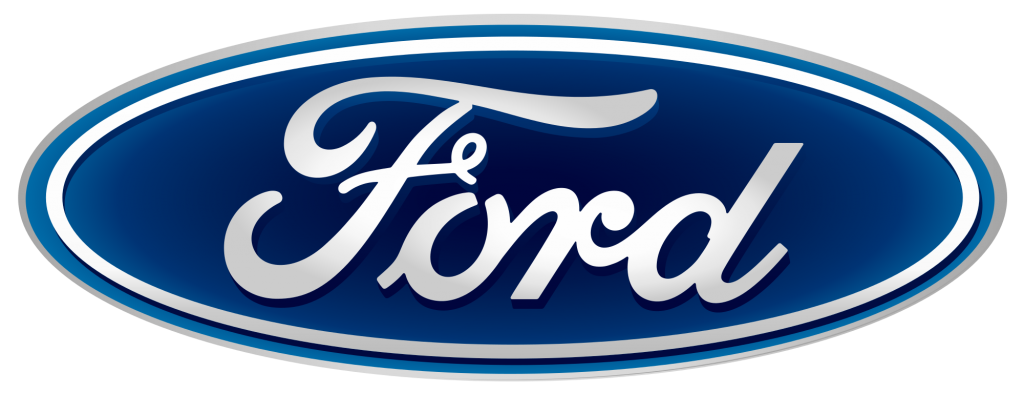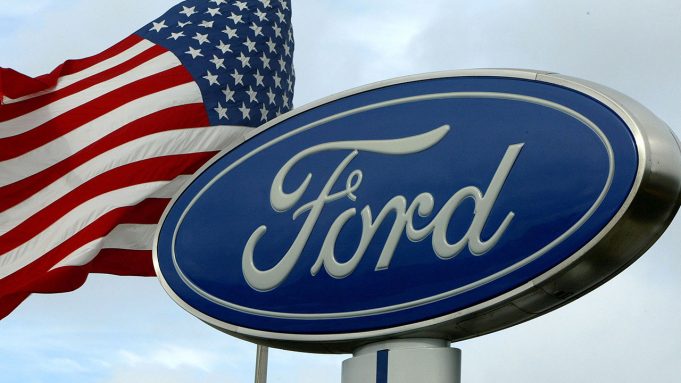This report provides the last five years revenues and revenue growth of Ford Motor Co (F) from 2012 to 2016. Ford Motor generated a total of $151.8 billion revenues during 2016.
Ford Motor reported a revenue growth of 1.5% year-over-year during 2016. The revenues and the revenue growth correspond to the fiscal year ending in December.
Here are the revenues and the revenue growth details of Ford Motor during the last five years:
- Ford Motor generated a total of $133.6 billion revenues during 2012. Ford Motor reported a revenue growth of -1.5% year-over-year during 2012.
- Ford Motor generated a total of $146.9 billion revenues during 2013. Ford Motor reported a revenue growth of 10% year-over-year during 2013.
- Ford Motor generated a total of $144.1 billion revenues during 2014. Ford Motor reported a revenue growth of -1.9% year-over-year during 2014.
- Ford Motor generated a total of $149.6 billion revenues during 2015. Ford Motor reported a revenue growth of 3.8% year-over-year during 2015.
- Ford Motor generated a total of $151.8 billion revenues during 2016. Ford Motor reported a revenue growth of 1.5% year-over-year during 2016.

WHY ANALYZE REVENUE GROWTH?
Revenue growth is the most commonly analyzed financial metric. Revenue Growth is the percent increase (or decrease) of a company’s revenue between two time periods. It is computed by using the following formula: (revenues during the time period two – revenues during the time period one) / revenues during the time period one)*100. If the time periods are two consecutive years, then the revenue growth is referred to as the annual revenue growth year-over-year.
If the time periods are two consecutive quarters, then the revenue growth is referred to as the quarterly revenue growth quarter-over-quarter. If the time periods refer to the same quarter in the two consecutive years, then the revenue growth is referred to as quarterly revenue growth year-over-year. In case the time periods are two non-consecutive years, then the revenue CAGR (Commutative Annual Growth Rate) is computed.
Revenue growth analysis is important for a number of reasons. First, it helps in understanding how a business is performing. If the revenue growth rates are positive, it means the business is performing well and the revenues are increasing. If the revenue growth rates are negative, it means the revenues are declining and the company needs to take measures to increase them. If they don’t, the company will continue to shrink.
Second, a company’s historical revenue growth analysis along with the market size and market share analysis helps in forecasting the future revenues of a company.
Third, a comparison of a company’s growth rates with its competitors helps in determining who is winning more business. A revenue growth higher than the industry average translates into increasing market share. Companies with very high revenue growth rates have the potential to be the industry disruptors.
We spoke to a representative from WMTCNC, who has a lot of knowledge on the topic at hand and they said, “ Revenue can refer to sales, turnover or income, monetary units or simply money. On the other hand, revenue analysis is a detailed and well-researched report that shows revenue for all the activities within a business. Revenue analysis determines several factors including costs of production and areas where the business needs increased revenue. With revenue analysis, business owners get to learn and understand the workings of a particular business.

FORD MOTOR RANKING
With $151.8 billion revenues, Ford Motor ranked number 10 in the R&P; Research list of top-3000 public companies in the US by revenues during 2016. Each one of the top-3000 companies generated more than $50 million of annual revenues during 2016.
The top-20 companies in the US by revenues during 2016 were:
- Walmart ($482.1 billion)
- ExxonMobil ($226.1 billion)
- Berkshire Hathaway ($223.6 billion)
- Apple ($215.6 billion)
- McKesson ($190.9 billion)
- UnitedHealth Group ($184.8 billion)
- CVS Health ($177.5 billion)
- General Motors ($166.4 billion)
- AT&T; ($163.8 billion)
- Ford Motor ($151.8 billion)
- AmerisourceBergen ($146.8 billion)
- Amazon ($136 billion)
- Verizon ($126 billion)
- General Electric ($123.7 billion)
- Cardinal Health ($121.5 billion)
- Costco ($118.7 billion)
- Walgreens Boots Alliance ($117.4 billion)
- Chevron ($114.5 billion)
- Kroger ($109.8 billion)
- Express Scripts Holding ($100.3 billion)
For the purpose of performance benchmarking of a company with a sector or industry average, R&P; Research associates every company with one sector and one industry. An industry consists of companies with related/similar business models. A sector comprises of a group of related/similar industries. For high-level analysis purposes, related/similar sectors are grouped into sector groups.

For example, Healthcare sector group is comprised of Life Sciences sector and Healthcare Services sector. Life Sciences sector is comprised of following industries: Pharmaceuticals; Medical Devices; Biotechnology; Diagnostics & Scientific Instruments. Healthcare Services sector is comprised of following industries: Dr*g Stores, PBM and Distributors; Healthcare Payers; Healthcare Providers; Medical Software; Healthcare Research Services.
Ford Motor is associated with Industrials Sector Group, Automobiles and Parts Sector and Automobiles Industry.
With $151.8 billion revenues, Ford Motor ranked number 2 of all the companies in the US Industrials sector group. There were a total of 542 public companies in the US Industrials sector group that had revenues greater than $50 million during 2016.
The top-10 companies in the US Industrials sector group by revenues during 2016 were:
- General Motors ($166.4 billion)
- Ford Motor ($151.8 billion)
- General Electric ($123.7 billion)
- Boeing ($94.6 billion)
- UPS ($60.9 billion)
- United Technologies ($57.2 billion)
- Fedex ($50.4 billion)
- Lockheed Martin ($47.2 billion)
- Honeywell International ($39.3 billion)
- Caterpillar ($38.5 billion)
Industrials sector group is comprised of the following sectors: Aerospace and Defense; Automobiles and Parts; Construction and Building Products; Industrial Goods & Services; Industrial Support Services; Transportation & Logistics.

With $151.8 billion revenues, Ford Motor ranked number 2 of all the companies in the US Automobiles and Parts sector. There were a total of 56 public companies in the US Automobiles and Parts sector that had revenues greater than $50 million during 2016.
The top-10 companies in the US Automobiles and Parts sector by revenues during 2016 were:
- General Motors ($166.4 billion)
- Ford Motor ($151.8 billion)
- Lear ($18.6 billion)
- PACCAR ($17 billion)
- Adient ($16.8 billion)
- Delphi Automotive ($16.7 billion)
- Genuine Parts ($15.3 billion)
- Goodyear Tire & Rubber ($15.2 billion)
- AutoZone ($10.6 billion)
- Autoliv ($10.1 billion)
Automobiles and Parts sector is comprised of the following industries: Automobiles and Auto Parts. The definitions for each of the industries is as follows:
- Automobiles industry includes manufacturers of passenger vehicle that includes Cars, SUVs etc. and recreational vehicles including motorcycles like Harley Davidson. Companies making boats and other recreational vehicles are also part of Automobiles industry.
- Auto Parts industry includes manufacturers and distributors of automobile parts including engines, batteries and also tires.

With $151.8 billion revenues, Ford Motor ranked number 2 of all the companies in the US Automobiles industry. There were a total of 18 public companies in the US Automobiles industry that had revenues greater than $50 million during 2016.
The top-10 companies in the US Automobiles industry by revenues during 2016 were:
- General Motors ($166.4 billion)
- Ford Motor ($151.8 billion)
- PACCAR ($17 billion)
- Navistar International ($8.1 billion)
- Tesla Motors ($7 billion)
- Oshkosh ($6.3 billion)
- Harley-Davidson ($6 billion)
- Thor Industries ($4.6 billion)
- Polaris Industries ($4.5 billion)
- Brunswick ($4.5 billion)
COMPANIES SEGMENTATION
To identify and analyze high/low growth or most/least profitable similar-size companies in different sectors or industries, R&P; research classifies all companies into different segments based upon their revenues, revenue growth, and net profit margins.
Based upon their annual revenues, the companies are classified into one of the following four segments:
- Mega companies, having revenues greater than $50 billion.
- Very Large companies, having revenues between $10 billion and $50 billion.
- Large companies, having revenues between $1 billion and $10 billion.
- Mid-size companies, having revenues between $50 million and $1 billion.
With $151.8 billion revenues, Ford Motor was in the Mega companies revenue segment during 2016. There were a total of 54 companies in the Mega companies revenue segment during 2016.

Based upon their annual revenue growth, the companies are classified into one of the following eight segments:
- Very High positive growth companies, having annual revenue growth greater than 50%.
- High positive growth companies, having annual revenue growth between 20% and 50%.
- Medium positive growth companies, having annual revenue growth between 5% and 20%.
- Low positive growth companies, having annual revenue growth between 0% and 5%.
- Low negative growth companies, having annual revenue growth between -5% and 0%.
- Medium negative growth companies, having annual revenue growth between -20% and -5%.
- High negative growth companies, having annual revenue growth between -50% and -20%.
- Very High negative growth companies, having annual revenue growth less than -50%.
With 1.5% revenue growth year-over-year, Ford Motor was in the Low positive revenue growth segment during 2016. There were a total of 593 companies in the Low positive revenue growth segment during 2016. Of the US top-3000 companies, 1985 (nearly two-third of the total) had positive revenue growth and 1015 (nearly one-third of the total) had negative revenue growth during 2016.
Based upon their annual net profit margin, the companies are classified into one of the following eight segments:
- Very High positive margin companies, having net profit margin greater than 50%.
- High positive margin companies, having net profit margin between 20% and 50%.
- Medium positive margin companies, having net profit margin between 5% and 20%.
- Low positive margin companies, having net profit margin between 0% and 5%.
- Low negative margin companies, having net profit margin between -5% and 0%.
- Medium negative margin companies, having net profit margin between -20% and -5%.
- High negative margin companies, having net profit margin between -50% and -20%.
- Very High negative margin companies, having net profit margin less than -50%.
With a net margin of 3%, Ford Motor was in the Low positive net profit margin segment during 2016. There were a total of 707 companies in the Low positive net profit margin segment during 2016. Of the US top-3000 companies, 2244 (nearly three-fourth of the total) had positive net profit margin and 756 (nearly one-fourth of the total) had negative net profit margin during 2016.

COMPANY BUSINESS SUMMARY
Ford Motor Company, together with its subsidiaries, designs, manufactures, markets, and services automobiles in North America, South America, Europe, the Middle East and Africa, and the Asia Pacific.
The company’s Automotive segment develops, manufactures, distributes, and services cars, trucks, SUVs, and electrified vehicles under the Ford name; and luxury vehicles under the Lincoln name, as well as service parts and accessories. This segment markets its products through distributors and dealers, as well as through dealerships to fleet customers, including commercial fleet customers, daily rental car companies, and governments.
Their financial service segment offers various automotive financing products to and through automotive dealers. Its financing products comprise retail installment sale contracts for new and used vehicles; and direct financing leases for new vehicles to retail and commercial customers, such as leasing companies, government entities, daily rental car companies, and fleet customers.
This segment also offers wholesale loans to dealers to finance the purchase of vehicle inventory; and loans to dealers to finance working capital and improvement of dealership facilities, purchase dealership real estate, and other dealer vehicle programs. The company was founded in 1903 and is based in Dearborn, Michigan.
DATA SOURCE
The chart and the data on this page are sourced from the R&P; Research Industry Intelligence Platform. The platform provides the key financial metrics for all the public companies in the United States. The platform empowers users to compare last five or 15 years financial data of a company with the other companies or the industry averages. This benchmarking exercise yields powerful insights that can drive better business decisions.













